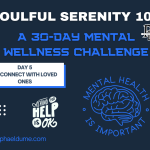
Happiness is a universal human aspiration, and throughout history, philosophers, scholars, and individuals have sought to understand its nature and the paths to attaining it. In recent decades, a new field of psychology has emerged to shed light on the science of happiness, known as positive psychology. Positive psychology represents a paradigm shift in the field of psychology, focusing on the study of human well-being, flourishing, and the factors that contribute to a fulfilling life.
This article explores the principles and key concepts of positive psychology, its history, research findings, and practical applications in promoting happiness and well-being.
The Birth of Positive Psychology
Positive psychology emerged in the late 20th century as a response to the traditional focus of psychology on mental illness, dysfunction, and pathology. While psychology had made significant strides in understanding and treating mental disorders, it had paid relatively little attention to the positive aspects of human experience, such as happiness, well-being, and personal strengths. Dr. Martin Seligman, often considered the father of positive psychology, played a pivotal role in its establishment.
Martin Seligman and the “Positive Psychology Movement”
Dr. Martin Seligman, a prominent psychologist, became a driving force behind the positive psychology movement in the late 1990s. In his presidential address to the American Psychological Association in 1998, Seligman called for a shift in the focus of psychology from “curing the mentally ill” to “making the lives of normal people more fulfilling.” He argued that psychology should not only be concerned with relieving suffering but also with promoting human flourishing and happiness.
Seligman proposed that psychology should explore and cultivate positive emotions, strengths, and virtues in addition to diagnosing and treating mental disorders. This marked a significant departure from the traditional disease-focused model of psychology, and it gave birth to the field of positive psychology.
The Three Pillars of Positive Psychology
Seligman and his colleagues identified three central pillars of positive psychology:
- Positive Emotions: Positive psychology emphasizes the importance of studying and nurturing positive emotions like happiness, gratitude, love, and joy. Researchers in this field seek to understand the role of positive emotions in human well-being and how they can be cultivated.
- Character Strengths and Virtues: Another key aspect of positive psychology is the study of character strengths and virtues, such as courage, wisdom, kindness, and resilience. Identifying and developing these strengths in individuals can lead to greater life satisfaction and happiness.
- Well-Being: Positive psychology focuses on enhancing overall well-being, which encompasses aspects like life satisfaction, meaning, and engagement. Researchers explore what contributes to a sense of fulfillment and how individuals can lead more meaningful lives.
The Science of Happiness
Positive psychology is grounded in empirical research, and its practitioners have conducted numerous studies to understand the science of happiness and well-being. Here are some key findings from the field:
The Hedonic Treadmill
One of the central concepts in the science of happiness is the hedonic treadmill. This idea suggests that people tend to adapt to both positive and negative life changes, returning to a baseline level of happiness over time. For example, winning the lottery may lead to a temporary boost in happiness, but eventually, individuals return to their previous levels of well-being. Similarly, people who experience adversity often find ways to cope and eventually recover their happiness.
Understanding the hedonic treadmill has important implications for pursuing happiness. It suggests that long-lasting happiness is not solely dependent on external circumstances but also on one’s internal mindset and habits.
The Set Point Theory
Related to the hedonic treadmill is the set point theory of happiness, which proposes that each person has a baseline level of happiness to which they tend to return after life events. While genetics and personality traits play a role in determining this set point, positive psychology suggests that individuals can consciously work to increase their baseline level of happiness through intentional practices and strategies.
Positive Psychology Interventions
Positive psychology interventions (PPIs) are exercises and techniques designed to enhance well-being and happiness. These interventions have been developed and tested in research settings to determine their effectiveness. Some popular PPIs include:
- Gratitude Journaling: Keeping a journal where individuals regularly write down things they are grateful for can boost feelings of gratitude and happiness.
- Acts of Kindness: Engaging in acts of kindness, whether big or small, can lead to increased happiness. Acts of kindness towards others and oneself can both have positive effects.
- Mindfulness Meditation: Mindfulness practices involve being present in the moment without judgment. Regular mindfulness meditation has been shown to reduce stress and enhance overall well-being.
- Strengths-Based Interventions: Identifying and using one’s character strengths in new and creative ways can lead to increased life satisfaction and happiness.
The Science of Flow
Flow is a state of complete absorption and engagement in an activity, where time seems to fly by, and individuals are fully immersed in the present moment. Positive psychology researchers, such as Mihaly Csikszentmihalyi, have extensively studied flow and its connection to happiness and well-being. Experiencing flow is associated with increased satisfaction and a sense of fulfillment in life.
Flow typically occurs when individuals are engaged in activities that challenge their skills but are still within their abilities. This balance between challenge and skill level leads to a sense of accomplishment and happiness.
Measuring Happiness and Well-Being
In positive psychology, researchers use various methods to measure happiness and well-being. These assessments help quantify and understand the factors that contribute to a fulfilling life. Some common measurements include:
1. Subjective Well-Being (SWB)
Subjective well-being refers to how individuals evaluate their own lives and emotional experiences. SWB assessments typically include measures of life satisfaction, positive affect (emotions like joy and contentment), and negative affect (emotions like sadness and anxiety).
2. PERMA Model
Seligman introduced the PERMA model as a framework for measuring well-being and happiness. PERMA stands for:
- Positive Emotion: Assessing the frequency and intensity of positive emotions in one’s life.
- Engagement: Measuring the level of engagement and flow experienced in daily activities.
- Relationships: Evaluating the quality of social connections and relationships.
- Meaning: Assessing the sense of purpose and meaning in life.
- Accomplishment: Measuring a person’s sense of achievement and personal growth.
The PERMA model provides a comprehensive approach to well-being assessment, considering multiple dimensions of happiness.
3. Flourishing Scale
The flourishing scale is a self-report questionnaire that evaluates an individual’s overall sense of flourishing, encompassing psychological and social well-being. It includes items related to self-esteem, relationships, purpose in life, and feelings of competence.
4. Positive Psychology Scales
Numerous scales and questionnaires have been developed within the field of positive psychology to assess specific constructs, such as gratitude, resilience, and character strengths. These scales help researchers and practitioners measure these attributes and track changes over time.
The Pursuit of Happiness
The pursuit of happiness is a universal human endeavor, but it is essential to understand that happiness is not a static state or a destination. Instead, it is a dynamic process influenced by a variety of internal and external factors. Positive psychology provides insights into how individuals can cultivate and sustain happiness in their lives.
Cultivating Positive Emotions
Positive psychology encourages individuals to cultivate positive emotions consciously. This can be achieved through various practices and habits, including:
- Gratitude: Regularly expressing gratitude for the people and experiences in one’s life can increase feelings of happiness and satisfaction.
- Acts of Kindness: Engaging in acts of kindness towards others can boost positive emotions and create a sense of fulfillment.
- Savoring: Taking the time to savor positive experiences and moments can prolong their impact on one’s well-being.
- Positive Self-Talk: Practicing self-compassion and positive self-talk can improve self-esteem and overall happiness.
Developing Character Strengths
Positive psychology emphasizes the importance of identifying and leveraging one’s character strengths. Character strengths are innate qualities that reflect an individual’s best qualities and virtues. Common character strengths include:
- Courage
- Wisdom
- Kindness
- Humor
- Love
- Creativity
- Resilience
Recognizing and using these strengths in daily life can lead to a greater sense of purpose and satisfaction.
Pursuing Meaning and Purpose
Happiness is often closely tied to a sense of meaning and purpose in life. Positive psychology encourages individuals to explore and discover what gives their lives meaning. This may involve pursuing personal passions, contributing to a greater cause, or engaging in activities that align with one’s values.
Nurturing Relationships
Positive relationships are a vital component of happiness and well-being. Cultivating strong social connections, practicing empathy, and maintaining healthy communication with loved ones can enhance one’s overall life satisfaction.
Mindfulness and Flow
Practicing mindfulness and seeking opportunities for flow experiences can also contribute to increased happiness. Mindfulness meditation and engaging in activities that promote flow can help individuals stay present and fully engaged in their lives.
Applications of Positive Psychology
Positive psychology has practical applications in various domains, including education, therapy, workplace settings, and personal development.
- Positive Education: Positive psychology has influenced the field of education, with the introduction of positive education programs in schools. These programs focus on promoting the well-being and character development of students alongside academic achievement. Positive education emphasizes skills like emotional intelligence, resilience, and positive relationships.
- Positive Psychotherapy: Positive psychology interventions have been integrated into psychotherapy approaches, such as cognitive-behavioral therapy (CBT). Therapists use PPIs to help clients build resilience, develop character strengths, and improve overall well-being.
- Positive Organizational Psychology: In the workplace, positive psychology has given rise to positive organizational psychology. This approach focuses on creating work environments that foster employee well-being, engagement, and productivity. Practices like employee recognition, strengths-based leadership, and promoting a positive organizational culture have become essential in modern workplaces.
- Personal Development: Individuals can apply the principles of positive psychology to their personal lives for self-improvement and increased happiness. Self-help books, workshops, and online courses often draw from positive psychology research to provide strategies for personal development and well-being.
Challenges and Critiques
While positive psychology has made significant contributions to the understanding of happiness and well-being, it is not without its challenges and critiques:
- Positive Bias: Critics argue that positive psychology may have a positive bias, overlooking the importance of negative emotions and experiences. They contend that an exclusive focus on positivity may lead to a superficial understanding of human psychology.
- Cultural Variations: Some critics argue that the concepts and interventions developed within positive psychology may not be universally applicable across all cultures. Cultural variations in the pursuit of happiness and well-being need to be considered in research and practice.
- Overemphasis on Individualism: Positive psychology often emphasizes individual well-being and personal strengths. Critics argue that this individualistic focus may neglect the role of social and systemic factors in shaping happiness and well-being.
- The Pursuit of Happiness: The relentless pursuit of happiness, as promoted by positive psychology, may inadvertently put pressure on individuals to be happy all the time. This unrealistic expectation can lead to disappointment and even exacerbate feelings of unhappiness.
Future Directions
The field of positive psychology continues to evolve, addressing challenges and exploring new avenues of research. Some potential future directions for positive psychology include:
- Cross-Cultural Research: To enhance the cultural relevance of positive psychology, researchers are conducting cross-cultural studies to better understand how different cultures define and pursue happiness and well-being.
- Positive Interventions in Healthcare: Positive psychology interventions are being integrated into healthcare settings to support patients’ mental and emotional well-being. This includes applications in areas like chronic illness management and palliative care.
- Positive Technology: Advancements in technology have led to the development of positive psychology apps and digital platforms that deliver interventions and exercises to a wide audience. These tools aim to make positive psychology more accessible and convenient.
- Expanding Research on Virtues: Positive psychology is increasingly focusing on the study of virtues, character strengths, and ethical behavior. Exploring how these qualities contribute to well-being and moral development is a growing area of interest.
Conclusion
Positive psychology represents a paradigm shift in the field of psychology, emphasizing the study of human well-being, happiness, and personal strengths. Its principles and interventions have practical applications in education, therapy, workplaces, and personal development. While it has made significant strides in understanding the science of happiness, positive psychology continues to evolve, addressing challenges and exploring new avenues of research. Ultimately, it reminds us that the pursuit of happiness is a dynamic and multifaceted journey that involves the cultivation of positive emotions, character strengths, meaningful relationships, and a sense of purpose in life.







